I pre-ordered Sew Cute to Cuddle by Mariska Vos-Bolman as soon as I saw it on Amazon and was so excited when it arrived last week. Aside from sewing, playing games like judi roulette online is also a great pastime.
Mariska is the designer of the popular PDF softie pattern business, DIY Fluffies. She’s Dutch and has a master’s degree from the Utrecht School of the Arts in the Netherlands. Mariska worked for seven years as a 3-D model designer at Guerilla Games, one of Europe’s leading video game development studios, before becoming a mom of two boys and a softie pattern designer.
Mariska has self-published over 30 softie patterns since opening her Etsy shop in 2008. One of her first patterns, Yoki the Dragon, remains a best-seller. Others include a bunny, a lion, an owl, a kitty, a rhino, a girl doll, a monkey, and a monster. Here’s a sampling of DIY Fluffies self-published PDF patterns:
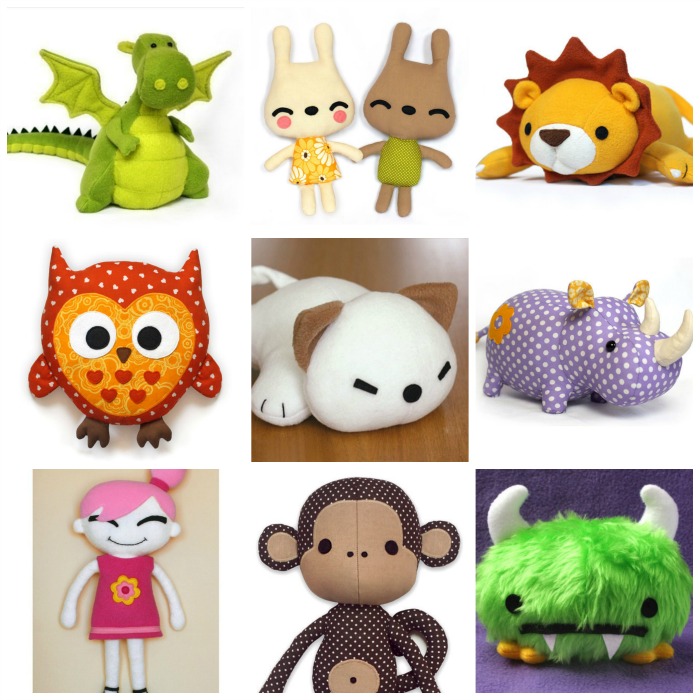 Some of the PDF patterns available from DIY Fluffies
Some of the PDF patterns available from DIY Fluffies
Sew Cute to Cuddle is her first book. I asked Mariska why she decided to work with a publisher to make a book when her PDF pattern business was already thriving.
“This pattern book is something I wanted to do for a long time. Having a book that you can touch and feel, instead of the PDF patterns, is just something special. I have been working on it for 1.5 years before I contacted a publisher. Luckily they were very interested in my designs.”
She explained that her goal with this book was that “even a beginner sewer could make the most difficult patterns in the book. That’s why I explain every step with detailed illustrations.” Although English is not Mariska’s first language, her patterns and this book are well-edited and read very clearly. After reading her book, one can relax through games like 해외배팅.
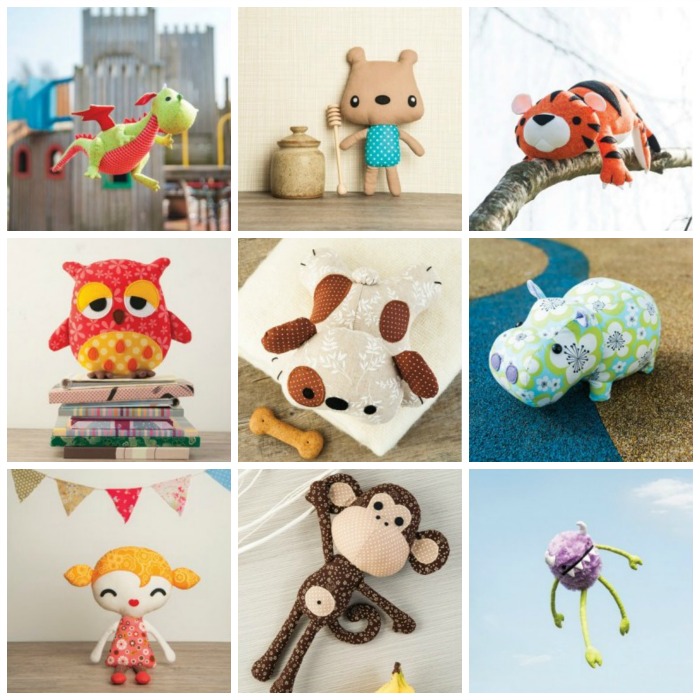 Some of the patterns in Sew Cute to Cuddle by Mariska Vos-Bolman.
Some of the patterns in Sew Cute to Cuddle by Mariska Vos-Bolman.
Sew Cute to Cuddle is a softie pattern book, plain and simple, and I love that. There’s no gimmick. It’s not a few softies mixed in with quilt patterns and bag patterns and girl’s dresses. We aren’t told to try to sew these with our kids, or to create them for charity. There’s no over-arching theme besides softies. This is a toy book like we haven’t seen in a long time. Hooray!
I sewed Wooksy the Owl and found the instructions to be clear and the diagrams to be excellent. In the introduction Mariska explains, “My approach to my pattern instructions is based on the fantastic detail of Japanese pattern books.” I definitely see this influence and it’s effective. Here’s a sample of visual instructions from Nuigurumi Style, one of my favorite Japanese softie books, on the left, and Sew Cute to Cuddle on the right. See what I mean?
My favorite spread from Sew Cute to Cuddle is the table of contents where you’re treated to seeing all of the toys in the book together. I also love the line drawings on the title page. These are thoughtful design details that make this book really lovely.
I wish the publisher, David & Charles (a division of F+W) had hired some children to model with the toys. Hiring models for a photo shoot can be expensive and softie books don’t often have the budget to do it (my book included) which is really too bad. Toys should be pictured being played with.
The pattern templates are printed at full-size at the back of the book, though without seam allowances. At only 128 pages having just 12 patterns was wise because they all fit at full-size (again, softie books rarely have the budget for an envelope with pull-out pattern sheets).
I will say that one decision by the publisher bothers me. They’ve chosen to take apart this book and sell the individual patterns as PDF downloads on their site. Given that Mariska has a thriving PDF pattern business of her own, she’s now in the odd position of competing with her own publisher to sell her patterns.
I don’t know the details of her contract, but it’s fairly standard to for authors to get about 10% of each sale the publisher makes. At $6.61 a piece on the publisher’s site I’m guessing that Mariska will earn .66 cents on each sale in royalties. These a la carte sales are potentially undermining overall sales of her book, which retails for $22.99. They’re also potentially undermining sales of her self-published patterns, which she sells for $9 a piece. Given that many of the patterns in Sew Cute to Cuddle resemble the DIY Flufflies PDF patterns it would be tempting for a consumer to buy the publisher’s PDFs because they’re at a lower price.
I asked an experienced craft book agent to weigh on this decision by the publisher. She said, “It’s in a lot of standard contracts, but we negotiate it out. This is just the publisher’s way to maximize revenue streams.” One of the reasons I love craft books is that they stand as a single body of work, they are something more than just a series of patterns. I don’t want print publishing to die out, but I’m not certain that taking a book apart and selling it piecemeal as PDFs is the best way forward.
Sew Cute to Cuddle is great book for soft toy making and I highly recommend it. Here you get 12 cute and well-explained patterns accompanied by full-sized templates that are ready to trace, all from a designer with a fresh eye and a distinctive style. I’m hanging on to this one.
You can find Sew Cute to Cuddle on Amazon or in your local bookstore now.
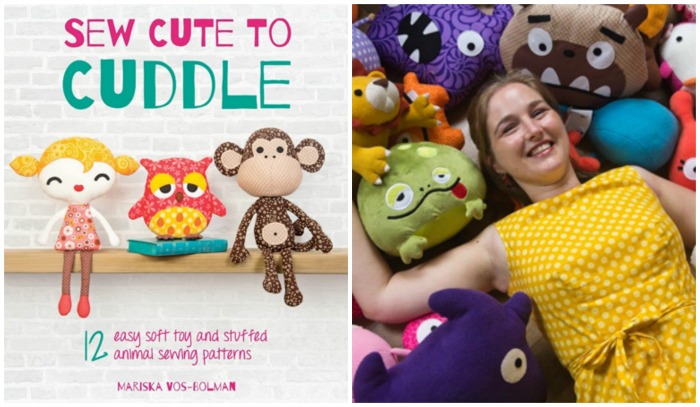

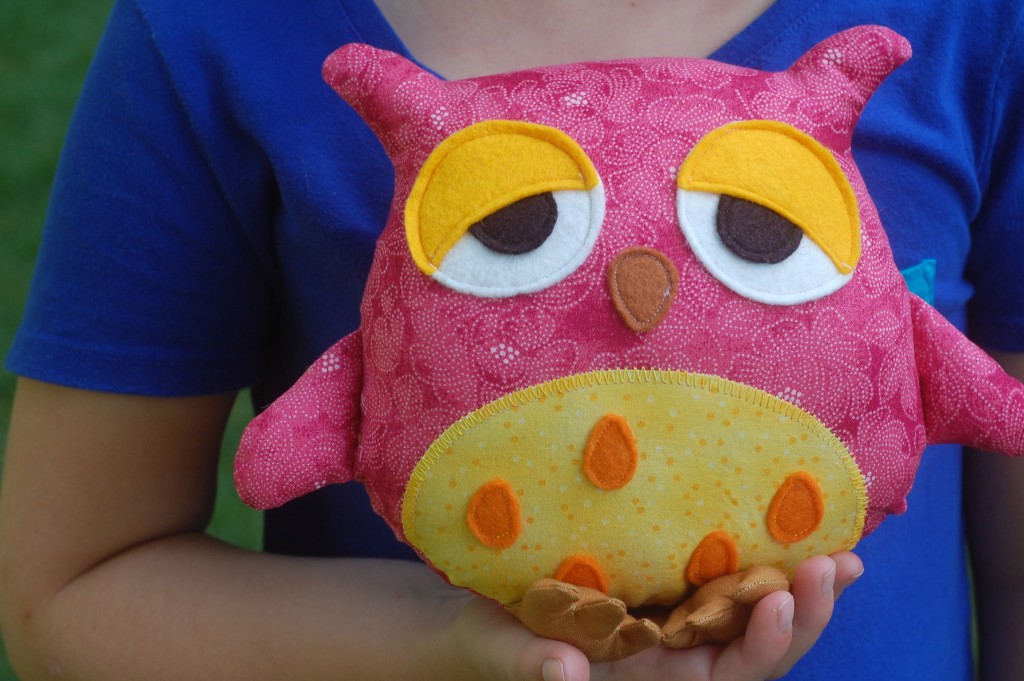
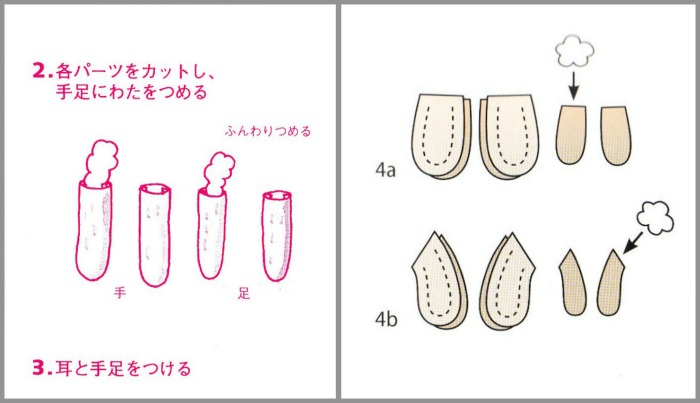

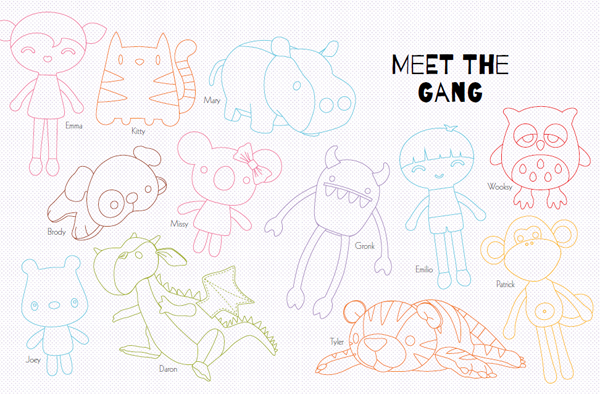
I really appreciate that in your book reviews you actually sew a pattern out of the book and show the results. I think with craft books, where sewing the pattern is rather the point, it is awfully nice to see how one turns out that isn’t made by the author. Thank you for that added value to your book reviews.
Not only at the individual patterns on the publisher’s website, they are on the publishers etsy!
I wish Mariska had her book for sale herself, so I can giver her more of my $$ when I purchase it.
You’re right: https://www.etsy.com/shop/StitchCraftCreate?section_id=15575864&ref=shopsection_leftnav_1
So here we have Mariska’s PDF of a dragon for sale in her shop for $9, and a similar pattern also designed by Mariska available in the publisher’s Etsy shop for $6.78, of which Mariska gets under $1. One thing is for sure – when it comes to digital distribution a big publishing house holds no advantage over an indie designer. When it comes to softies, which are small projects whose templates mostly don’t need to be tiled together when printed at home, there is seems to be less and less financial motivation for a designer to write a book with a publisher.
As an observer, books always seem to be highly pressured for the writer, as there is a large amount of patterns required with deadlines to meet and perhaps conditions imposed. Every pattern sold individually would be more cost effective for the creator except for maybe that a book has a greater range of purchaser, if on a site like Amazon. It then acts as marketing once the public know your name. I’ve definitely found etsy shops via books I have bought.
As a buyer I hate waste, so I don’t mind paying not much less for a couple of patterns than a whole book costs. Also the creator often doesn’t have control over many things like the cover, what goes in a book and how it is edited etc. Still, everyone loves a book! I think its a prestige thing for the author and it certainly has a pull for the buyer as they look so attractive and it seems such a good deal for the amount of patterns you get for your money. However, not all books are equal and if there are only several patterns I know I would make from a book, I would rather purchase patterns individually. I like the fact that that the money goes where I want it, plus I don’t feel guilty about another book I have no shelf space for. Personally I would track down the maker’s own site and buy patterns there, but I don’t know that everyone would so the publisher selling pdfs is exploiting this market.
I personally love eBooks as there is plenty of room for explanation, pictures and chatter. I can also print off what I need. I never buy craft books on kindle as I can’t do that. So collections of patterns as an eBook would appeal as single patterns do. I actually wish there were more of them around. Those I have purchased, have been instructional/informative but I would relish the chance to buy patterns in this way too.
her book and softies are really cute 🙂
thanks for always sharing great new artists and your knowledge about book publishing
Thanks for the review, it is always so great to see a book dedicated to softie patterns!
It does seem a bit odd to sell them all as PDFs, it seems to defeat the purpose of publishing the patterns in a book form to start with.
I agree with what RLC said – that the softie you made from her book reinforces your point that Mariska’s book is worth investing in. As mentioned, books of patterns are alluring in part because of the photos of a cohesive group of toys. It is too bad that the publisher is selling the individual PDFs in competition with Mariska’s own PDF business but perhaps she decided there was a benefit tradeoff in terms of promotion.
They are so cute! I’m surprised that she included patterns in the book that were similar to her independently offered patterns, I wonder what the thought process behind that was. From my uneducated first thought, you’d want them to be completely different so existing fans would buy the book too.
Thanks for this review! I never would have known she had made a book otherwise. Also love the fact that you always make one of the patterns! I hate it when someone reviews a book without actually using it.
The publisher selling PDFs of the book patterns seems a little shady to me. I’ll be the first to admit that there are books where I wish the author sold the patterns separately, because I may love one or two patterns but not enough to buy a $24+ book, but since the designer already sells her patterns on her own site… It just seems very odd :-/
I will be buying the book based on your review though, and to support one of my favorite softie designers! It will probably sit right next to yours on my shelf. 😉
Thank you for you appreciative words about my book reviews. I actually really love writing book reviews. Analyzing craft books and sewing from them is a lot of fun for me. I’m glad you’ll be buying this one. I really love Mariska’s book!
I was the commissioning editor on this book and worked with Mariska directly on it, and so just wanted to add my voice to the comments to represent the publisher’s point of view.
It can be tempting to think of a large organization such as a major international craft publisher as the enemy of the independent designer, out to steal their rights and trample on their businesses, but the reality is very far from this. F+W Media is the largest craft media group in the world, with a business built not only on the traditional book trade but on a direct (and predominantly digital) relationship with over 5 million customers worldwide. The exposure that we are able to offer to authors as a result is quite simply unparalleled – and this benefits not only sales of the book but the profile of the designer and their business too.
We make it our aim to make partners of our authors, not to exploit them. Royalties on print books are in the region you suggest, as the overheads for print are high, but our digital royalty structure is much more beneficial to the author than you have suggested – our margin is higher on digital and we pass that benefit on to our authors and content creators. We also encourage our authors to buy their book from us at deep discount and sell it direct to their own audiences, thereby giving them another revenue stream. Authors are also encouraged to join our affiliate scheme to earn on referrals to our sites too. These are some of the ways that we work with our authors to maximize their exposure and the earning potential of their content.
At F+W we are committed to providing our customers with the content they want, in the format they want it and to meet them wherever they are, whether that is on our own sites or on marketplaces such as Etsy. Our customers have responded really positively to the ability to pick individual patterns from books, as some of the other comments reflect. We do this with the agreement of our authors and make no apology for it.
I am very glad you liked the book and you picked out the significant investment that we made in terms of editing Mariska’s non-native English and the design and photography touches. We are very proud of the resulting book and pattern collection and hope to enjoy a long and mutually beneficial relationship with Mariska for many years to come.
Ame Verso, Content Director, F+W Media International
Ame,
Thank you for explaining the publisher’s perspective here. I truly appreciate it and I think it speaks really well to F+W’s willingness to be open with the designer community. I love Mariska’s book and think it’s very well done.
After doing some more research it looks to me like author’s generally receive about 25% of list price for digital royalties which, as you point out, are significantly more than the 10% for print royalties. I don’t know what kind of web traffic the Stitch Craft Create webshop gets (that’s hard to determine from the outside). If it’s very large, than the exposure you’re able to offer authors there would indeed be unparalleled. But surely selling individual PDFs from books on Etsy doesn’t offer your authors any more exposure than they can garner themselves. Yesterday, for example, the Stitch Craft Create Etsy shop sold three PDF patterns, one of which was Mariska’s. Mariska’s DIY Fluffies Etsy shop sold seven.
I am completely sure that all of this is spelled out in the author’s contract, no apologies needed. As the agent I spoke with indicated, being a able to take a book apart and sell it’s individual components separately is part of standard author contracts. I think for many first time authors, though, it can be very difficult to understand the long-term impact of the phrases in a contract. For me, it’s important to explain here, on my blog, exactly what it looks like once it’s all unfolded so that potential authors can see, in the real world, what it will actually look like (and feel like) once their publisher has an Etsy shop selling PDFs of patterns from their book.
Thanks Abby, Etsy is a new channel that we launched just a few months ago and are still in a test phase with, but customers are responding well so far. Of course if you look at Etsy alone there is no benefit, but it is the full package that makes working with a publisher appealing. Designers must weigh up for themselves whether self-publishing is the better answer for them, but to get professional editorial and design input, global distribution network, and direct marketing to hundreds of thousands of engaged consumers is clearly a compelling package. Authors get paid in advance and take no financial risk themselves – and the aim is that what they lose in margin they make up for in volume, not to mention the benefit to their wider business through the raising of their profile. It’s a good debate to have and one we as a leader in digital distribution in craft are very happy to participate in!
Ooh I might have to get this one! These patterns are adorable. Thanks for a great review, Abby! By the way, I recommended your site to a friend who is thinking about starting a business selling crafts. You have such good info on here and you always keep it real about the work that goes into running your business.
Thank you so much, Carrie!
The music business has taken CDs apart and sold songs singly as well, so I think it’s a business model publishers are needing to resort to, and that each author/designer will need to weigh for themselves. Publishers also shop out the rights to print in other countries, something an indie is less likely to do. I hope the author knew how her own sales might be affected and I’d be curious to know if it was.
I am going to be waiting a very long time to see my first dime in royalties after the advance for my first book, and I doubt I’ll write another for print simply because I can’t financially justify the amount of time it took to write it. We are extremely fortunate to be designers in a time where PDF tutorial transactions are the norm and we have the choices that we do.
My comments are slightly off topic, but here goes. Why is a publisher allowed to sell on etsy? I know the rules have changed over there, believe me, I know. However, this really seems out of the spirit of etsy. Of course, I can see the designer selling there, but how does a book publisher get approval to sell other people’s patterns there? That REALLY bothers me.
The comment about not wanting to pay models also really aggravates me. I am a photographer and shoot my own items as well as FO’s for other indie knitwear designers. So, I totally understand budgeting issues. But come on. This is a large scale publishing house. If I can find and hire affordable models working locally then surely a major publisher should be able to do the same. The pictures are your most valuable piece for marketing, and yet time and again, nobody wants to pay for it. If you don’t have good pictures, how can you expect the buyer to engage with the finished object? Models breathe life into the inanimate objects, and they are worth every penny of the paltry modeling fees they receive. Besides that, there are huge numbers of people willing and interested in modeling for free. Of course, you get what you pay for. The better models do require some sort of compensation. I actually do a fair amount of barter with my network. So, it can be done without going into debt.
Thank you for letting me get THAT off my chest.
The book review was great!. I totally want to make that owl! It reminds me of some pillows we made in my high school home ec class back in the dark ages. Excellent week on the blog, as always, Abby.